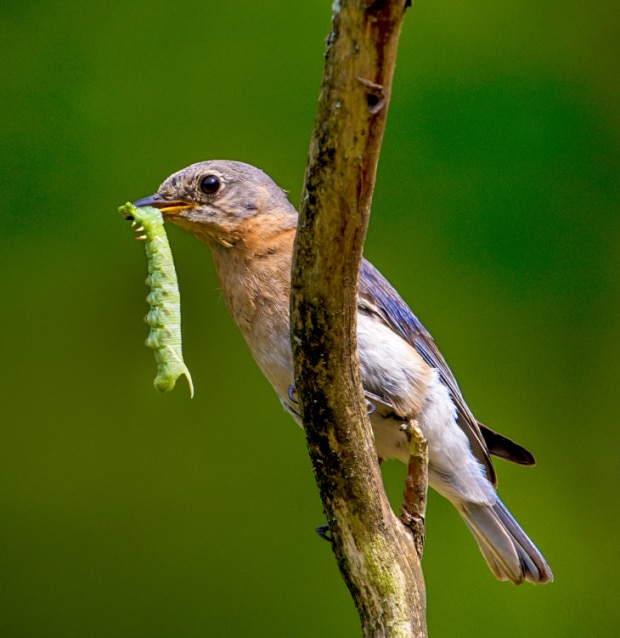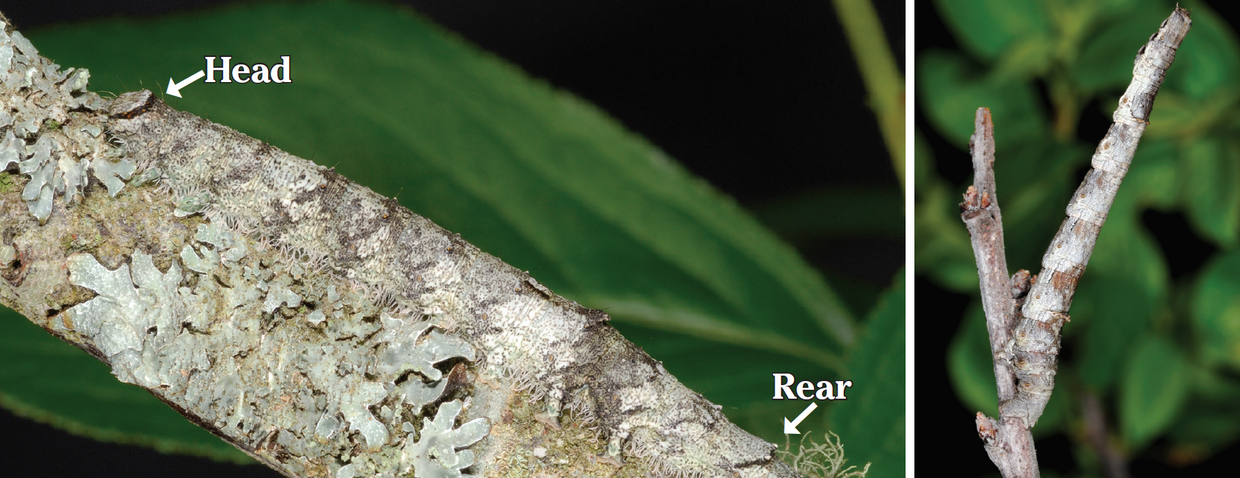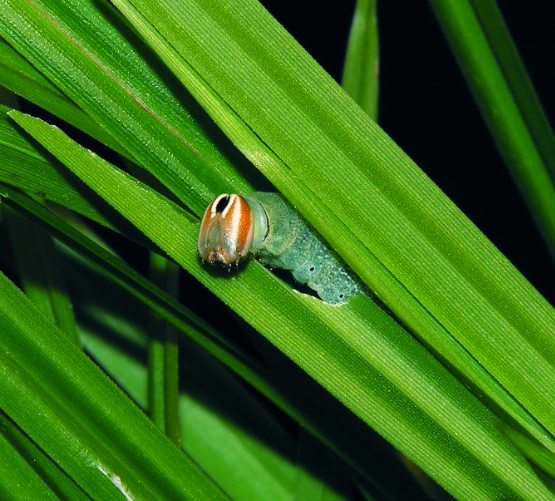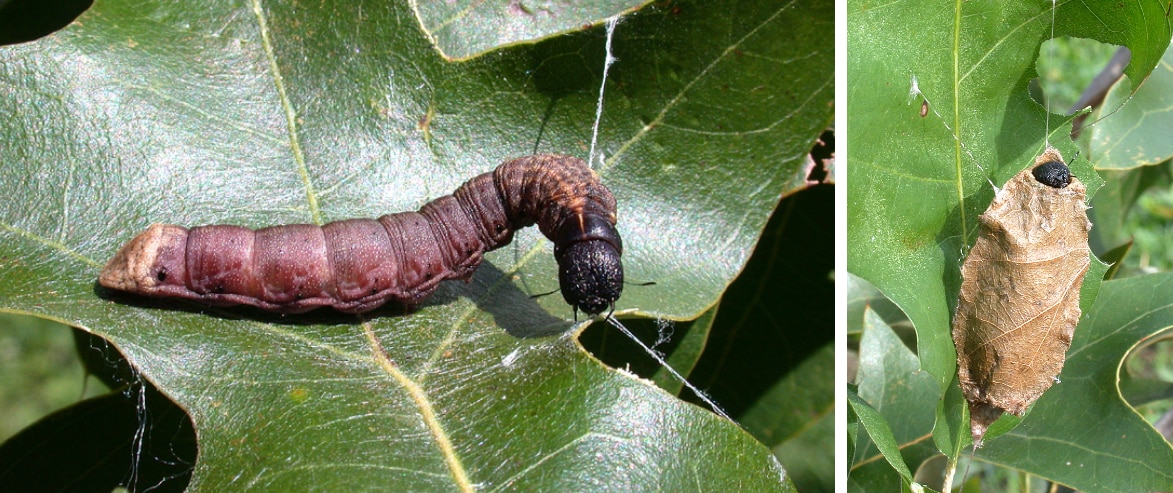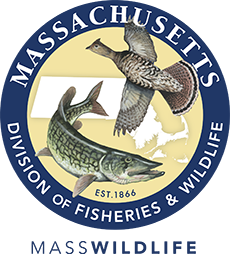- Division of Fisheries and Wildlife
In the forests, shrublands, and grasslands of Massachusetts, in the waters and along the shorelines, animals are looking for other creatures to eat. Moths and butterflies are sought by millions of predators. Caterpillars of moths and butterflies are both abundant and nutritious, and therefore particularly important prey for songbirds.
Each spring, songbirds arrive in droves to feed, breed, and engage in more frenzied hunting to feed their growing offspring. These adept predators search every surface looking for a meal. Moths and butterflies (collectively called “Lepidoptera”) possess a variety of interesting strategies to survive this potentially deadly game of hide and seek.
Camouflage and mimicry
One effective way to avoid predation (being eaten) is to hide. Hiding species are often colored to match natural objects on which they rest. Many nocturnal moths spend the entire day motionless, relying on camouflage to hide in plain sight. Many green caterpillars can be found on the undersides of leaves or aligned with the edge of a leaf. Some brown caterpillars rest on tree bark while others are mottled to match lichen or moss.
Sometimes the elongated shape of a caterpillar is enough to attract attention of a hungry bird. Once spotted, a caterpillar suffers the same fate as a ballpark wiener. In response, some caterpillars have adapted distinctive colors and shapes to mimic their surroundings. Many caterpillars in the moth family Geometridae are “twig mimics.” These caterpillars sit motionless on a branch in an upright, angled posture for an entire day and only move and feed in the dark of night.
Left: Precious underwing caterpillar on bark with lichens and moss. Right: Johnson’s euchlaena moth caterpillar in “twig mimic” posture.
Predators can also learn to recognize the triangular shape of a resting adult moth. In response, some moths have developed alternative body shapes. For example, the adult Melsheimer’s sack-bearer in its daytime resting posture (pictured at the top of the page) doesn’t look much like a moth to most people, and probably not to most birds.
Taking shelter
Some caterpillars rely on certain kinds of plants for food and for a great hiding spot. For example, the Appalachian coronet moth feeds on the tissue near the base of campion flowers. Adult females lay their eggs inside the flower near the capsule of seeds; the young caterpillars hatch and feed while hidden inside. As the caterpillar—and its appetite—grows, it moves from flower to flower during the night to avoid detection.
Some caterpillars actively construct a shelter, most commonly from leaves. The Dion skipper butterfly uses silk to tie blades of sedge together to form a tube. (Lepidoptera caterpillars can produce silk from glands on the front of their head.) The caterpillar hides in its tubular shelter by day and emerges to feed on nearby sedge leaves at night. When fully grown, the caterpillar sheds its skin to become a pupa, remaining hidden inside the sedge shelter until the adult butterfly is ready to emerge.
The behavior of Melsheimer’s sack-bearer is reflected in this moth’s name. The caterpillar builds a shelter, or “sack,” out of oak leaves, which it also eats. The caterpillar pulls the edges of a leaf inward with lines of silk, curling it into a cylindrical shape around its body and leaving a hole at each end. Extra leaf material is chewed off and the sack is suspended from nearby leaves. The caterpillar only emerges at night to feed, remaining hidden in the sack during the day. The sack-bearer remains inside its protective shelter as a pupa and emerges as an adult.
Melsheimer’s sack-bearer caterpillar uses silk to construct and suspend a leaf shelter on scrub oak.
These examples represent just a fraction of the many cunning strategies used by moths, butterflies, and many other species to avoid detection by predators. The next time you’re walking outside, take a closer look among the plants and trees to see what tiny creature may be hiding there.
A version of this story, written by Michael W. Nelson, MassWildlife’s invertebrate zoologist, appeared in Massachusetts Wildlife magazine in 2016.
